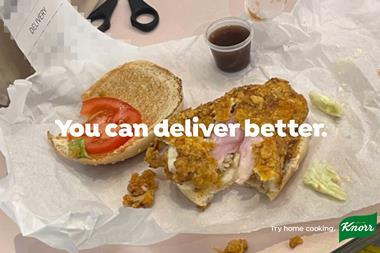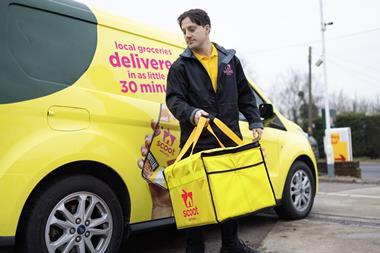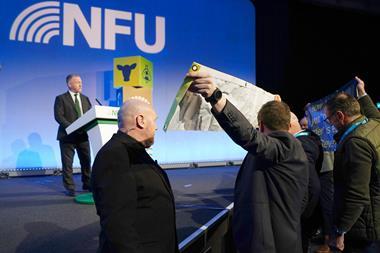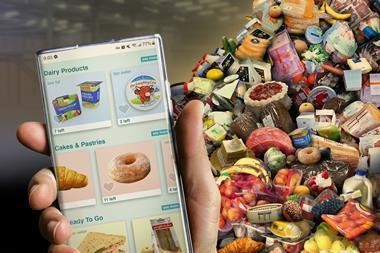Supermarkets aren’t the only ones mining customer data to target offers more effectively. Banks are too… in the US at least. But will ads on online bank statements take off here?
Who could be better than the supermarkets at capturing data on consumer spending patterns? The banks, that’s who. They know exactly how much we spend, when we spend it and who we spend it with - unlike the supermarkets, who only really know what we spend with them or their loyalty card partners.
With such a goldmine of information at their fingertips, it was only a matter of time before the big banking groups started to woo marketers and advertisers interested in reaching consumers via targeted adverts and customer offers in online bank statements.
That time may have come. Transaction-driven marketing’, as its’ known, is already well established in the US, but now it looks set to hit UK shores. Market leading transaction driven marketing business Cardlytics, which works with 375 bank chains in the States, including Bank of America, is expected to sign a deal with a major UK high street bank in the coming months and is currently in talks with a number of other financial institutions.
But how does this service benefit retailers and should they be wary of putting their names to something that veers ominously close to big brother territory?
Although the concept of transaction-driven marketing has been around for some time, until relatively recently banks and utility companies had to resort to placing ads for services on printed statements. As a result, the offers were poorly targeted and it was difficult to accurately gauge conversion rates.
“Customers can redeem offers just by using their debit card instead of having to carry around a plethora cards or print vouchers”
Attul Sehgal, Red Zebra
But the rapid take up of online statements over the last decade or so has allowed a new breed of marketing company to emerge capable of mining customer data and, crucially, offering retailers insight into the spending patterns of infrequent customers and non-customers. Retailers are then able to come up with tailored offers to coax them through the door.
By drilling down into the data, a supermarket could offer customers who spend more than £200 a month on groceries but haven’t shopped at one of its stores for three months a discount on their next shop, for instance. Or, if it was opening a new supermarket, it could target all people in the surrounding postcodes with offers to get them into the store.
As well as providing an invaluable insight into shoppers who are not customers, it also gives retailers a greater insight into their existing customer base, adds Cardlytics UK MD Jason Brooks, who cites the example of one US retailer who discovered that 2% of its customers accounted for 25% of sales. “They can infer this to an extent from proxies, but they don’t have the accurate picture we have,” says Brooks.
Because this form of transaction-driven marketing takes place online, it also makes it easier to measure response rates, which Cardlytics claims are high, thanks largely to the simplicity of the model.
“If you’re getting targeted and relevant offers, why would you not want to be a part of it?”
Jason Brooks, Cardlytics
To accept an offer from a retailer, customers simply have to click on the ad that appears in their online bank statement. Customers then redeem these offers by paying with their bank card at the retailer. The system automatically recognises that the offer has been redeemed and the discounted amount is then applied to the customer’s bank account.
In the US, 15% to 20% of customers click on these transaction ads, which compares to typical online ad banner click-through rates of 0.1% to 0.3%. Around 15% to 20% of those customers who click on the ads go on to redeem an offer, which is again much higher than typical online rates of less than 5%.
Attul Sehgal, CEO of British-based company Red Zebra Analytics, which offers a similar service to Cardlytics and is currently running a transaction driving marketing pilot project in Germany, argues that it’s the ease with which customers can respond to offers that ensures that conversion rates are high. “It simplifies everything,” he says. “Customers can redeem offers just by using their debit card instead of having to carry around a plethora of cards or print out vouchers.”
A bold statement
Cardlytics and its rivals have attracted some big name investors. In the UK, it operates from the offices of Nectar card operators Aimia. Aimia acquired a minority stake in Cardyltics in 2011 for $23m. It has also raised finance from a number of other investors.
MasterCard has also invested in the field, acquiring Cardlytics rival Truaxis in September last year. MasterCard’s chief product officer Tim Murphy said the platform would allow it to “offer merchants and financial institutions a solution that helps them better connect with consumers”. He added that it was an evolution of the traditional coupon programs popular today.
It all sounds great, but there’s one big difference between the US and the UK that could limit takeup here. Because of regulation, customers in the UK will have to opt in to the service, whereas in the US customers are signed up automatically. Despite the drawback Brooks is confident interest will be strong and that people will opt in, citing YouGov research suggesting “millions and millions” of consumers would embrace it.
“In the US, our opt out rate is very low - only 1.4%,” he adds. “If you’re getting targeted and relevant offers, why would you not want to be a part of it?”
The service is already proving incredibly popular with retailers in the US. More than 65 of the top-100 retailers in the country are working with Cardlytics, which charges retailers a fee for all transactions resulting from the ads. “We have quite a few retailers in the US spending 5% to 10% of their advertising budget with us,” says Brooks.
He puts the success down to the results. For every $1 spent with Cardlytics in the US, retailers get back an average of $5.82 in incremental sales, he claims. “We can help retailers get a better return on their ad spending and we can prove our results unequivocally.”
With the deal with the UK bank due to happen shortly, the company has already lined up some big name retailers in the UK across different industries from entertainment through to fast food and grocery, claims Brooks.As for allegations that transaction-driven marketing is tantamount to spying on customer spending habits, he stresses that only aggregated data is passed to Cardlytics and partner merchants. “All Cardlytics campaigns are created securely and no personally-identifiable data ever leaves the bank,” he says.
With the banks already in its sights next up for Cardlytics is social media. The company announced earlier this month that it was rolling out its service to Facebook, allowing users to opt in to receive offers and rewards via their Facebook accounts.
Regardless of whether you like it or not, the age of personalised online advertising has arrived. The question is: will UK consumers embrace it if that advertising is delivered by a bank - and they’re free to opt out?












![[yellow tail] Shiraz in new packaging in table setting. Credit Chris Pearce](https://dmrqkbkq8el9i.cloudfront.net/Pictures/380x253/9/5/5/350955_yellowtailshirazinnewpackagingintablesetting.creditchrispearce_519850.jpg)






No comments yet